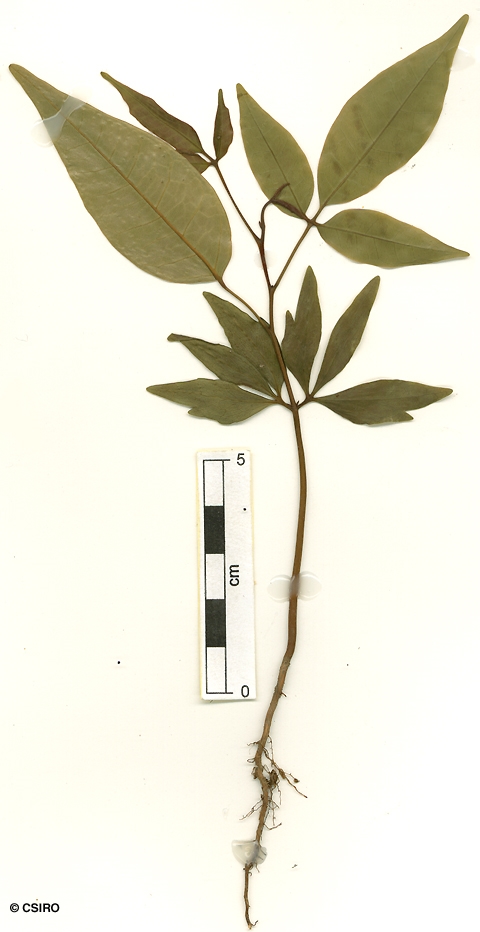Australian Tropical Rainforest Plants - Online edition
Canarium muelleri F.M.Bailey



Bailey, F.M. (1890) Catalogue of the Indigenous and Naturalised Plants of Queensland : 106. Type: Johnstone River. Dr. Thos. L. Bancroft.
Blaze odour resembling mango (Mangifera indica) or turpentine but not as strong as C. australasicum. Exudate clear or slightly milky, slow and meagre.
Leaf scars +/- heart-shaped or semicircular in outline. Lenticels normally quite numerous on the twigs and sometimes also occurring on the compound leaf rhachis. Stalk of the terminal leaflet longer than that of the lateral leaflets. Old leaves turn red prior to falling. Leaflet blades about 5-9 x 2-3.5 cm.
Inflorescence up to 10 cm long. Petals about 2-3 mm long.
Fruits about 13-20 mm long. Cotyledons 3-lobed.
Cotyledons trifoliolate, lateral leaflets with a single lobe or tooth. Petiole hairy. First pair of leaves not toothed. At the tenth leaf stage: leaves often reddish or brown on the underside; new growth clothed in short, pale and dark scale-like hairs. Seed germination time 11 to 14 days.
Sap of this species is reported to be poisonous when it enters the body by way of a cut. Cleland (1943).
Dr Lauterer found it a very good healing agent for cuts, sores and chronic ulcers. Cribb (1981).
Produces a useful general purpose timber.
Wood specific gravity 0.69. Cause et al. (1989).





